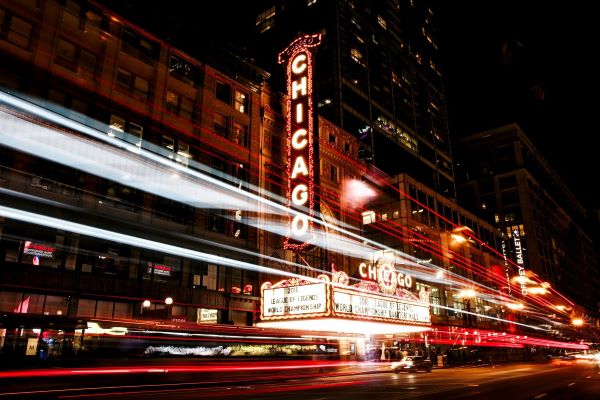CDPH is also responsible, in part, for addressing drug use in the area. That’s done through research, advocacy, and outreach. The department also offers treatment programs for qualified people. But some critics say more could be done to keep Chicago safe from drug abuse.
History of the Chicago Department of Public Health
City governments are packed tight with departments, and each has a specific function. Every city across the country has a department of public health, but Chicago’s is one of the oldest. And it has changed along with the city’s needs.
All public health departments, according to the Centers for Disease Control and Prevention, work hard to:
- Promote healthy lifestyles.
- Study injury-prevention methods.
- Detect and prevent disease.
- Respond to and address infectious-disease outbreaks.
- Limit health disparities.
CDPH has always tried to meet these goals. But the target of the work, officials say, has shifted with time:
- Before the 1850s: Sanitation was the focus. Officials passed guidelines to curb the spread of disease.
- Between 1850 and 1920: Officials targeted clean water. They also required contagious disease reporting.
- In the 1950s: Medical care and early childhood death were the emphases of campaigns. Officials also worked on delivering care to low-income neighborhoods.
- In the late 1980s: Officials streamlined services to ensure the stability of care.
Within the last decade, CDPH has changed again. Rather than offering care within facilities owned by the government, teams reached out to community clinics. They could reach more patients without buying more buildings and adding staff.
That led to significant staff changes, officials admit. But it could mean more people got the help they needed.
Programs Available Through CDPH
Chicago is a large and diverse city, and not surprisingly, its departments are also massive. The Chicago Department of Public Health breaks down its work into several smaller task forces. That allows the team to offer help while maintaining quality control.
CDPH services and programs include:
- Healthy homes. Officials track data regarding bed bugs and lead contamination. They help with cleanup when needed. And they offer education to keep the problem from recurring.
- Health inspections. Experts visit restaurants, cafeterias, and other food-prep spaces to ensure they provide safe meals.
- Health protection and response. Teams stand by to help when a communicable disease, tuberculosis outbreak, or immunization crisis appears. They also help communities understand how to prepare for and prevent a crisis.
- Healthy mothers and babies. Eligible moms can get assistance with healthy foods. Teams also offer nursing support.
- Healthy living. Experts help to reduce obesity, substance abuse, and HIV rates.
- Health services. In clinics, professionals deliver primary care and assist patients with mental health concerns.

Drug Abuse in Chicago
Drug abuse extends beyond one person or one family. Making a drug like meth can contaminate an entire community. Similarly, someone driving under the influence of drugs could harm people, property, or both.
That makes addiction a public health issue. And CDPH is working on solutions.
CDPH helps families facing addiction by:
- Providing information. Families hoping to research available treatment centers can get a list from the Chicago Department of Public Health.
- Offering hotlines. Families facing a crisis can call 1-833-2-FINDHELP to get care immediately.
- Connecting with peers. CDPH maintains a list of support groups that meet in Chicago.
- Offering treatment. The mental health division delivers outpatient care and medication management.
Despite this care, Chicago remains an addiction hotspot. In an analysis performed by the Washington Post, reporters discovered that 2 billion pain pills entered Illinois between 2006 and 2012. Some people had prescriptions and used their drugs properly. Others did not.
Opioid overdose rates in Chicago continue to climb. In 2016, researchers say, 1,946 people died due to opioid overdose in the city limits. In 2017, 2,202 people died. The majority of deaths were in low-income neighborhoods. Those spaces should, in theory, be eligible for CDPH help. And yet, deaths continue to rise.

How to Get Drug Abuse Help From CDPH
Substance use issues can be addressed with help from CDPH. But residents will need to do a bit of homework to find out how to connect with that help.
If you use drugs and you’re not in a mental health crisis situation, you can get help through CDPH Mental Health Centers. There are six of them available:
- Englewood MHC on West 63rd Street
- Greater Lawn MHC on West 55th Street
- North River MHC on North Pulaski Road
- Greater Grand/Mid-South MHC on South Cottage Grove
- Lawndale MHC on South Campbell Street
- Roseland MHC on East 115th Street
Staff at these centers can assess your mental health and devise a program just for you. All of these facilities are open five days per week during traditional working hours, so you won’t stay overnight. But if the team determines that you need a higher level of care, you can get referred to hospital programs.
Questions about treatment options?
Our admissions team is available 24/7 to listen to your story and help you get started with the next steps.

